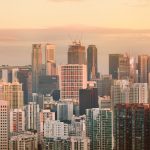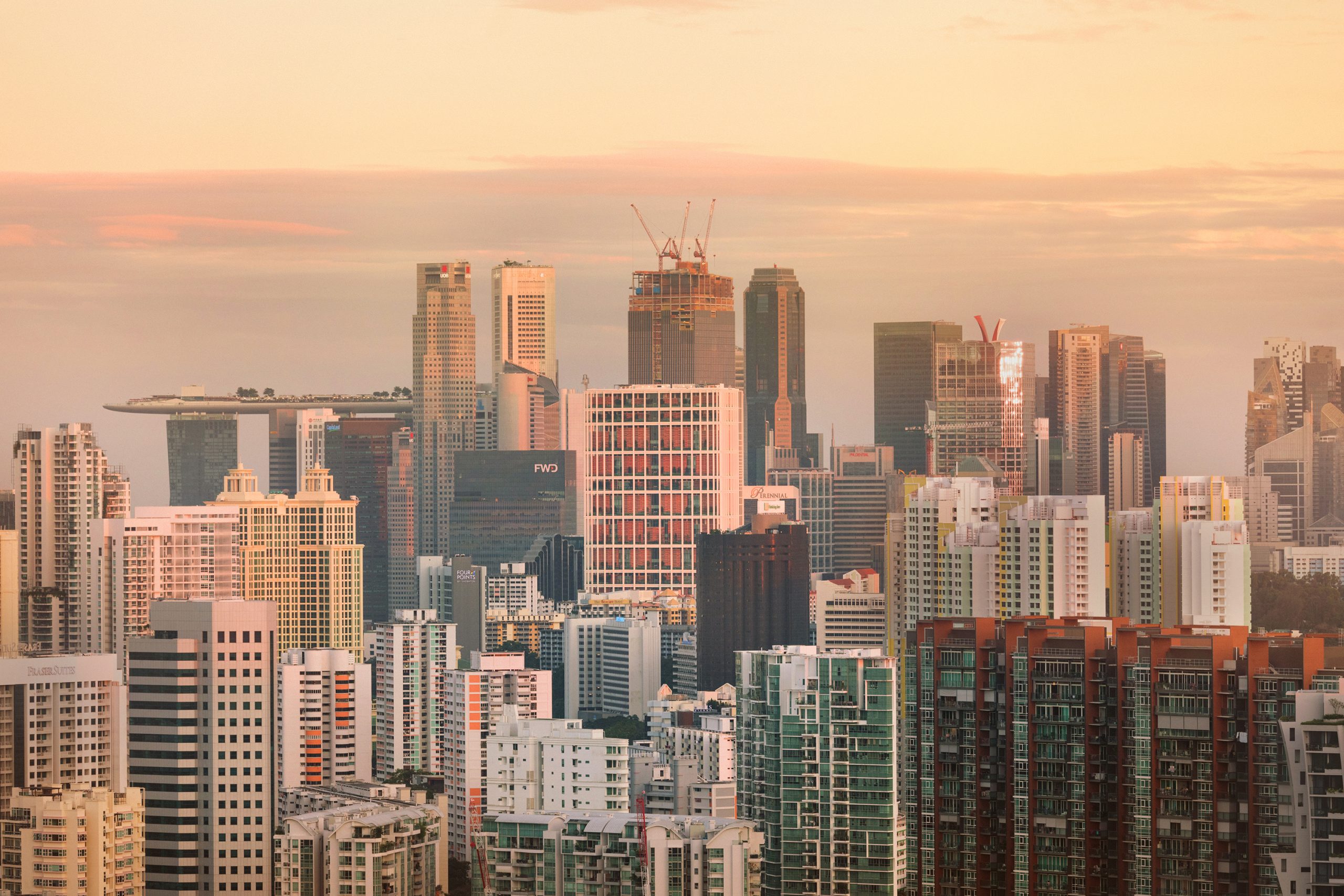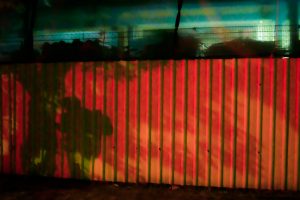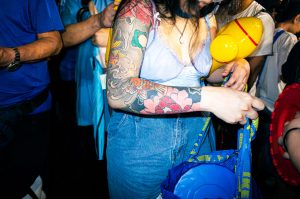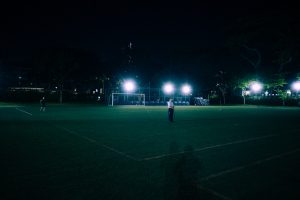In this new series, we invite photographers from the region to curate a series of images from their body of work. We then use this as a starting point for in-depth conversations about their work, and the issues they’re seeking to explore.
ADVERTISEMENT
You may not find the name Finbarr familiar, but chances are you’ve seen his work before. From this photograph that made it to the front page of The Straits Times, where tsunami-like storm clouds are seemingly crashing into high-rise buildings in River Valley, to this giant illustration of an imagined, futuristic subterranean Singapore that serves as the hoarding of an under-construction SAM, this London-based photographer and artist—who relocated to Singapore five years ago—has been quietly but steadily working his magic on our shores.
Perhaps it’s his background in architecture, or his unique perspective as a relatively new resident, but there’s something special about his photographs of our landscapes and structures. Something dreamlike and almost otherworldly. In this photo series, we invite Finbarr to handpick a bunch of his own favourite shots, and to share with us some of the motivations behind his work.
INT: Hello Finbarr! Here in this short series of photos many of the themes in your work are already evident; we can see how you’re drawn to capturing unusual/forgotten spaces, or the way you bring to attention the co-existence of greenery and concrete… there’s a lot unpack here. To start things off, could you walk us through your process of selecting and sequencing these photos?
The focus of this selection of photographs is my time living in Singapore over the past five years. Prior to that I had been living in London, so there were a few things that felt starkly different when I arrived, like the ubiquitous greenery that acts to stitch together the different parts of the city, and the dramatic tropical weather.
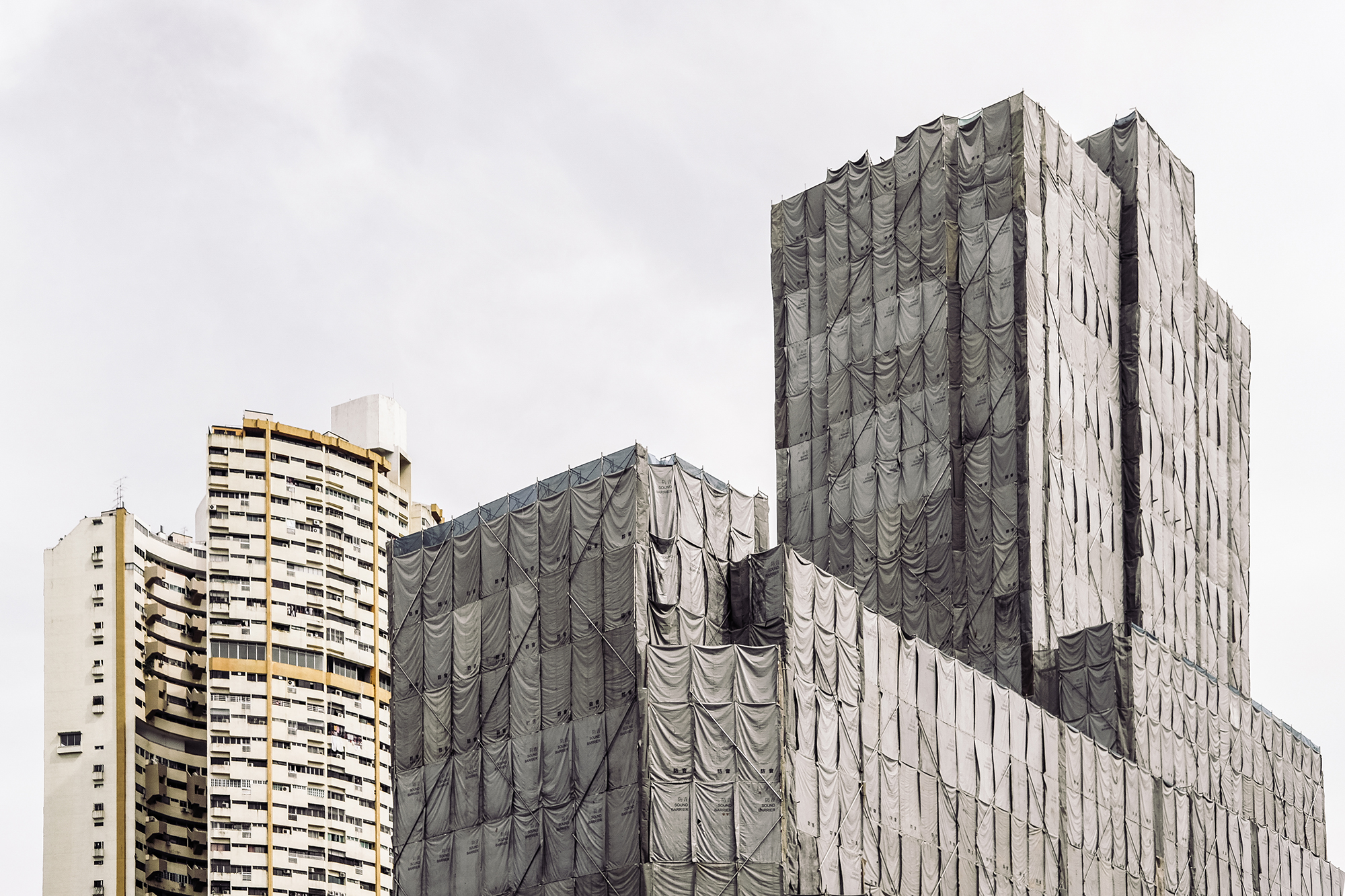
F: This wrapped up image of Pearl’s Hill Centre with Pearl Bank Apartments (PBA) in the background was one of the first images I took in Singapore, and is one I look back on as a moment of accidental prescience.
My focus was actually Pearl’s Hill Centre, with PBA intended as a contextualising location marker, as I found the shroud-style of demolition very intriguing and almost ritualistic in nature – where buildings are first wrapped in grey cloth and then steadily disappear floor by floor. It’s kind of a reverse mummification, where the intent is not to help preserve the body, but to enable its vanishing from existence. But looking back now, the juxtaposition of the two buildings actually foreshadowed that the same fate would befall PBA, too.
We had a view of PBA from our flat, and it was quite heart-rending to watch it slowly disappear. Its fate seems quite characteristic of what my local friend was exploring in his architectural thesis – how Singapore is a dementia nation, a country that forgets its past in its constant pursuit of evolution.
I wanted to start documenting the remarkable rate of churn in the cityscape, since it seems that the only certainty here is change.


INT: In love with these photos – they’re a great example of your eye for noticing subtly unusual characteristics in buildings. Are these things you already notice, hence photographing the buildings, or is it through the act of photographing that you discover its more unique/complex features?
I love modernist architecture, and Crystal Court is a great example of late eighties post-modern design. To me, structures of this era are very expressive, and I find them exciting to look at as they are often more playful and dynamic in form. Quite unlike modern developments, which tend to be highly standardised in pursuit of efficiency and profit maximisation.
When photographing such structures, I consciously adopt a process of ‘slow observation’ to seek out compositions which capture the form in unusual ways, including repeat visits at different times of day. In the course of researching these buildings before visiting them, I am often surprised to find out that their current state is quite different from their original design – in fact Crystal Court used to be clad in blue, yellow and chrome!
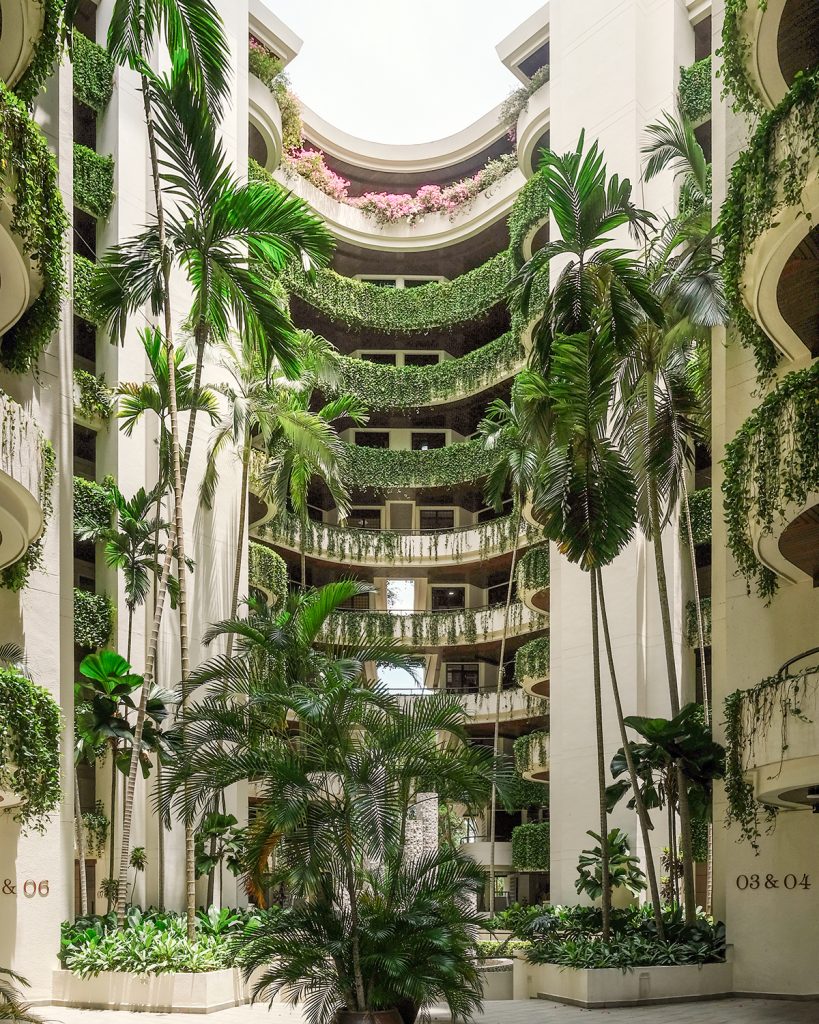

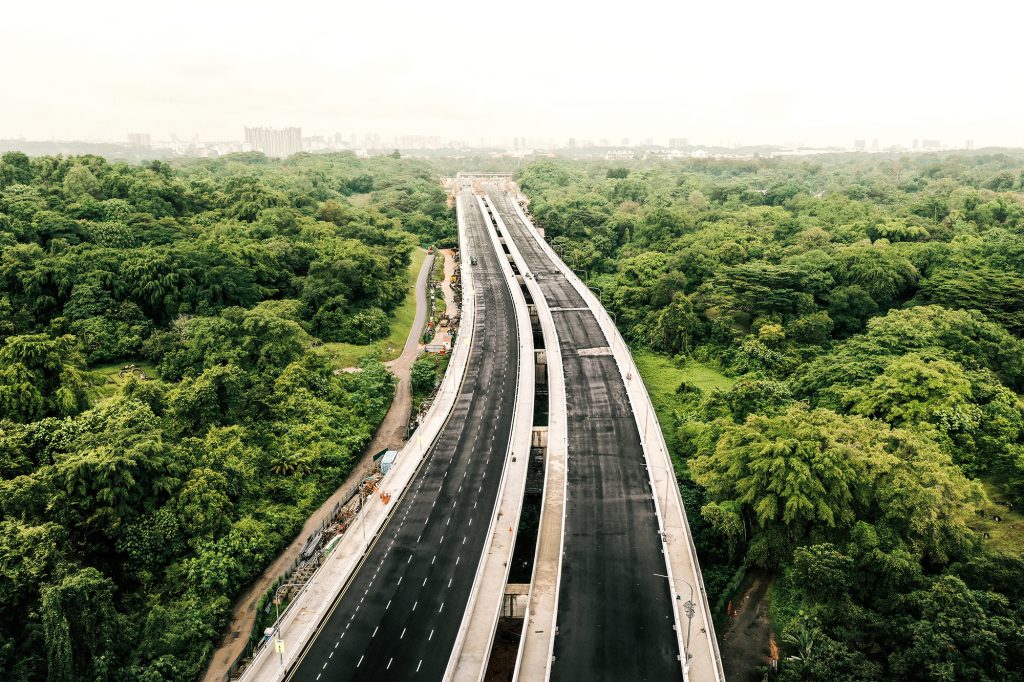

House in Highland Road

Shophouse, Tanjong Pagar
INT: Laid out together in such a manner, the above photographs express a sort of symbiotic relationship between nature and the city – from highways being built over forests to trees almost swallowing up a house. And then of course we have photographs of nature, in a way, being appropriated to beautify structures. As you put these together, were there any thoughts that you had about this relationship? And as a relatively new Singaporean what do you think of our ‘garden city’?
ADVERTISEMENT
F: The photos in this section are about capturing the tension between the city and nature. Singapore’s commitment to greening despite its land constraints is really impressive to me: I think this tension has been very productive in generating distinctive buildings, and new ways of tropical living. There are the lush but manicured developments such as Arcadia, and individual houses such as in Highland Road where the owners have let nature run wild.
But there are cases where this tension is not so easily resolved, and the existence of nature is apparently irreconcilable with our population’s needs. One place I love is Bukit Brown, which is really overgrown – it is one of a few places here where I feel that I’m in the wilderness. But a huge highway was built through it a few years ago – I took this aerial image whilst it was under construction. The highway perfectly divides the forest as if splitting it in half.
It will be interesting to see how the garden city vision evolves. While we are talking about having a City in Nature now, Singapore is still land-scarce and it’s a difficult balancing act between the “City” and the “Nature” parts of that vision – just look at the recent public debates arising from planned or implemented greenery clearance! I’m curious about what the next bound of our garden city vision will be…

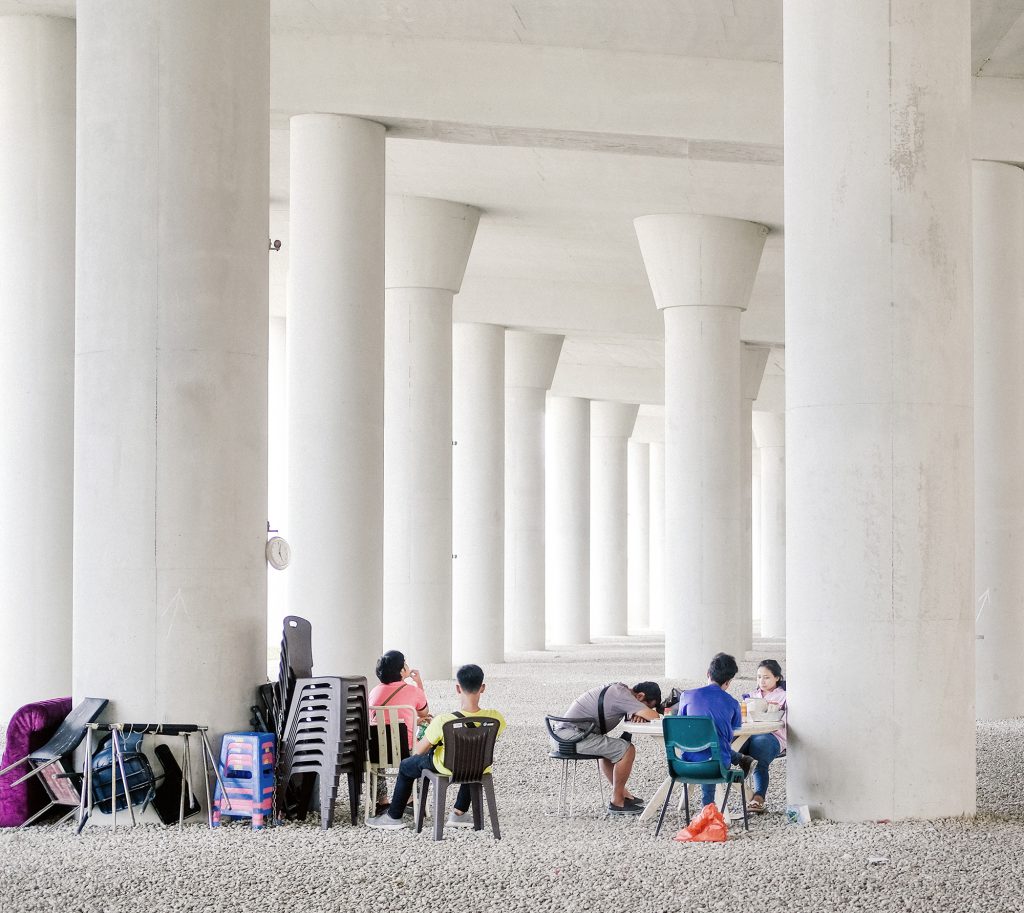
Keppel Viaduct
INT: This is the first image where there are human beings in sight, and it almost feels strange to see them inhabiting your photographs here. And looking at your feed, I notice that the majority of your photographs don’t have people in them, and the structures always look clean, unoccupied. Is this a conscious decision on your part? Do you think the presence of human beings in your “architecture photographs” changes the way they feel?
ADVERTISEMENT
F: Sometimes it’s intentional, and sometimes it’s opportunistic. While the presence of people can add greatly to the stories I’m looking to tell, they often don’t appear when and exactly where I most need them, but equally they might take me by surprise with their serendipitous appearance.
I have visited this underpass at Keppel Viaduct perhaps twenty times, as I am drawn to its surreal sense of scale and its cathedral-like form. Each visit has yielded very different photos, because it was inhabited by very different people each time – from construction workers to fishermen and passersby who enjoy resting within the shade of its underbelly. There‘s a revolving door of furnishings, with people bringing in and out sofas, tables, chairs, and even at one time adding a clock on the column, which felt very homely.
I particularly like the arrangement of people in this photograph and the way the man on the left, hand on chin, appears to be contemplating this immense space before him.
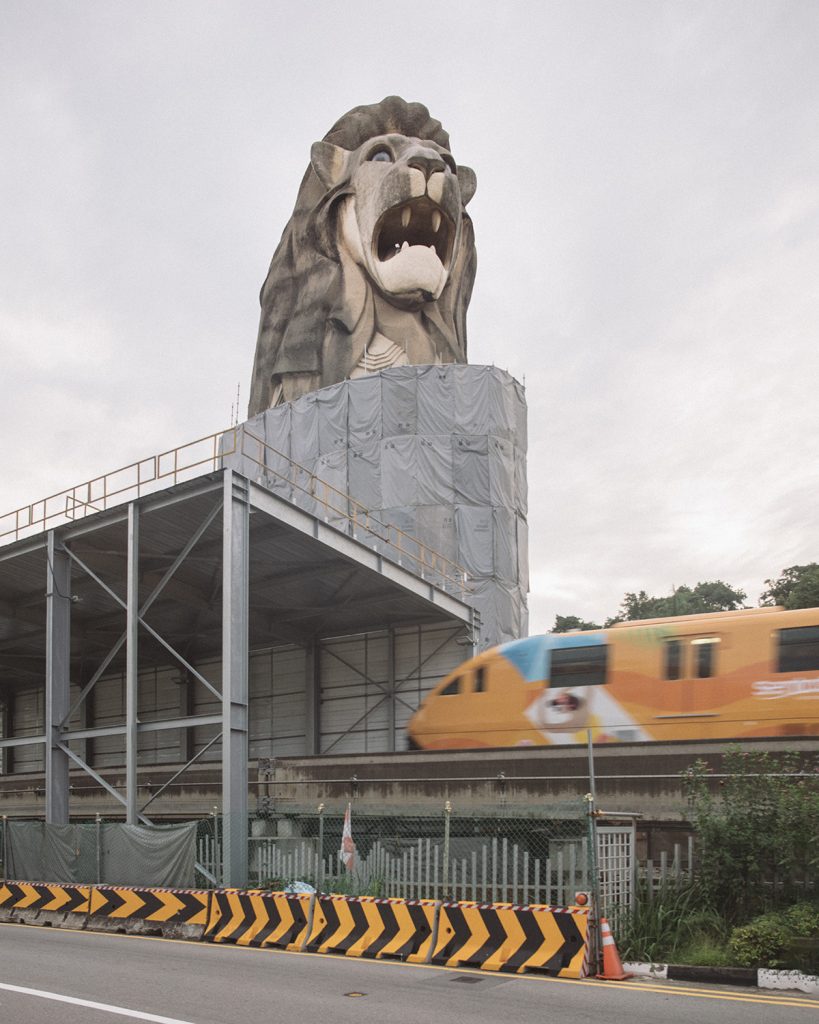
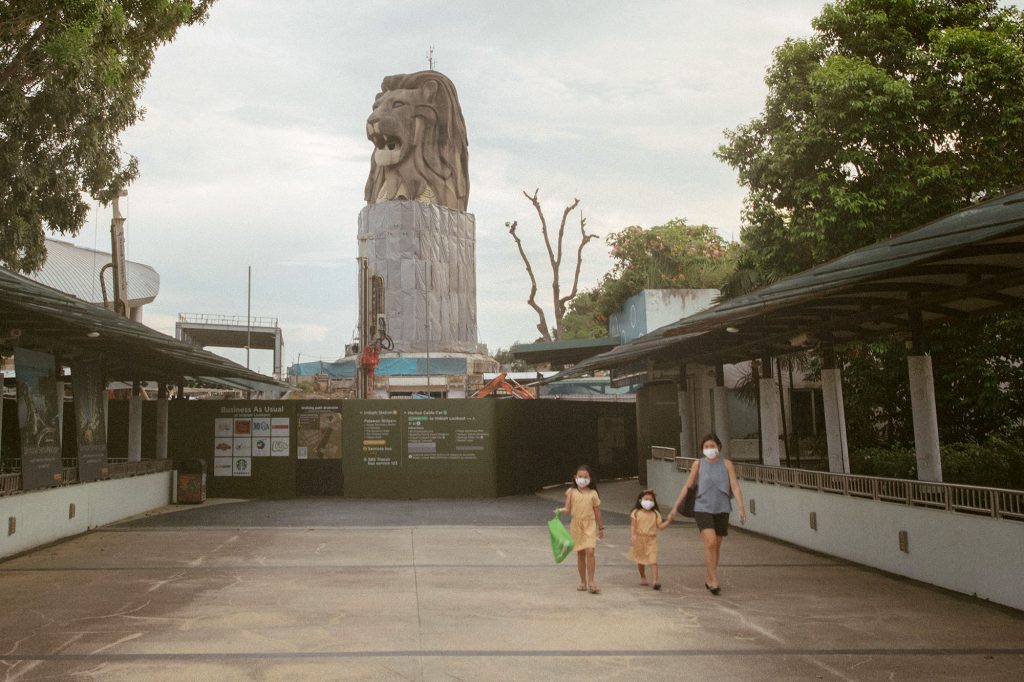
Sentosa, State of Fun: Covid-19
INT: It’s that demolition shroud again. Why did you choose to close the series with these photos, which almost seem to veer away from your distinctive style?
F: Thematically, this loops back to the idea of renewal and change being inevitable. The past year has been difficult for Singapore due to the Covid-19 pandemic, and I feel this picture tells the story of this sombre period. The Merlion appears to be gasping for air as it is similarly encased within its demolition shroud, next to an equally sad bare and wilted tree. But this was an instance where the presence of people in the built environment helps to tell the story; the lady and child walking together, holding hands, felt like a moment of stoic optimism together amidst a time of uncertainty.

